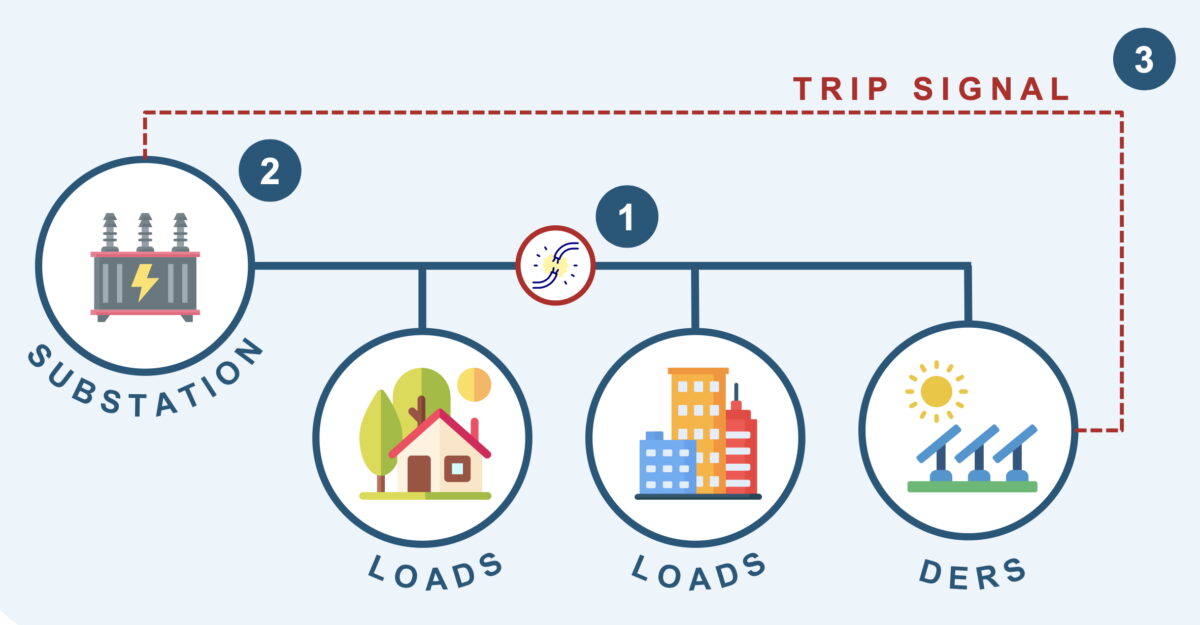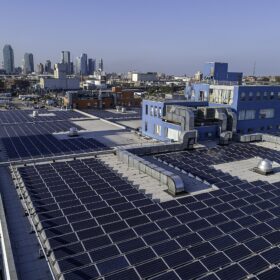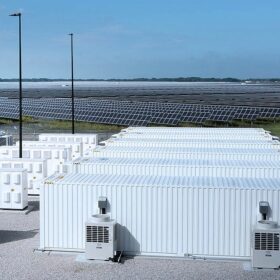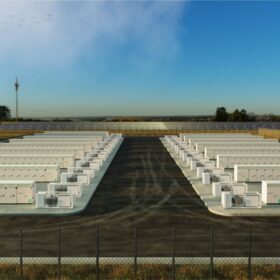For a community solar project sized at several megawatts, a utility requirement to fund an emergency shutoff technology known as direct transfer trip (DTT), designed to take the project offline in the event of a distribution circuit fault, is “often prohibitively expensive,” said the Coalition for Community Solar Access (CCSA), and “many solar project developers have had to withdraw projects as a result.”
While a solar project sending energy into a distribution circuit that the utility believes is de-energized—a phenomenon known as unintentional islanding—would present an electrocution risk to line workers, CCSA cited research and utility experience showing that DTT is unnecessary in most situations.
A low-cost solution recommended by CCSA is for regulators to adopt inverter performance standards prescribed by the IEEE 1547-2018 standard, because such inverters disconnect from utility grids within two seconds of the loss of energy from the utility. CCSA made that recommendation and others in a report titled “Direct transfer trip: The interconnection problem you’ve never heard of.”
DTT costs typically include substation equipment upgrades costing $1 million to $2.5 million, and installation of a communication medium costing $200,000 per mile where a fiber-optic line is required, CCSA said.
Solar developers polled by CCSA reported that DTT has been required by utilities in 14 states, and that 100% of certain project portfolios in at least four states were required to pay for DTT equipment.
Requiring use of IEEE 1547-compliant inverters would allow for a higher penetration of distributed energy resources without requiring DTT by default, CCSA said, noting that the utility National Grid, in cases where there is a potential risk of islanding, relies on inverters certified to meet the IEEE standard “coupled with reclose blocking.”
IREC’s engineering study
Now IREC has released an engineering study on DTT and alternative approaches to mitigating islanding risk, titled “Deconstructing direct transfer trip.”
Based on an in-depth engineering analysis of islanding and other utility concerns and how they may be mitigated, the report finds that in some jurisdictions, utility concerns are “leading to unnecessary and costly grid protection schemes such as DTT.”
IREC advises that regulators should disallow requirements for distribution-level DTT for inverter-based distributed resources, and instead encourage utilities to use “cost-effective” grid protection strategies, such as inverter anti-islanding functions, ground fault protection, and extending reclose intervals. The report notes that most new inverters are compliant with the IEEE 1547-2018 standard.
The report makes further recommendations regarding utility screening studies and analyses related to the risk of islanding.
IREC said that its recommendations support “a modern and risk-informed approach” to mitigating unintentional islanding that can “ensure safe grid operations while accelerating the clean energy transition.”
This content is protected by copyright and may not be reused. If you want to cooperate with us and would like to reuse some of our content, please contact: editors@pv-magazine.com.








In 30 or so direct transfer trip situations (out of several thousand applications), the total costs was in the $100 to $150,000 installed.
I don’t know of any installation in the US where the cost for just transfer trip costs $1 million, normally that kind of cost includes other items beyond direct transfer trip. Since UL no longer does PCS testing using UL1741, limited export is not a function of UL7141 certification, In 2026 we should see UL3141 approved for PSC functionality.
FERC Order 901 has triggered several updates and new requirements from NERC (most still in progress). In addition P1547 will deal with many situations that were not in 1547-2018. It should help limit the situations that need transfer trip.
The best thing to do is avoid building systems sized to trigger transfer trip situations.